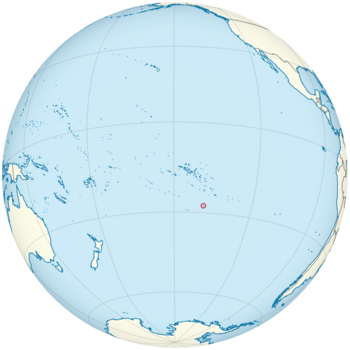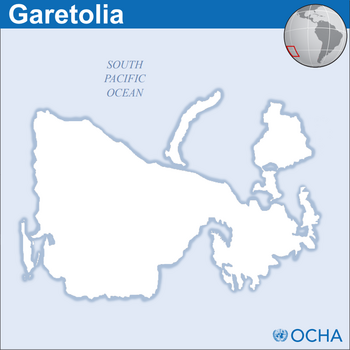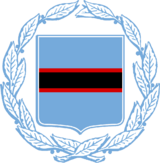Garetolia: Difference between revisions
No edit summary |
No edit summary |
||
| Line 108: | Line 108: | ||
====Great Britain and James Cook==== | ====Great Britain and James Cook==== | ||
In 1776, {{wp|James Cook}} of {{wp|United Kingdom|Great Britain}} found the island for the British. He and his other nearly 100 men stayed for 3 months, and almost always came into contact and discovered that the islanders had their own languages, cultures, and customs. James Cook distinctly noted that the islanders had traditions similar to those of the {{wp|Sentinelese}}. One of his men, [[Joseph Franklin]], was {{wp|ritual sacrifice|sacrificed}} by the islanders, which led Cook to believe that the islanders also had distinct religions. Later in the year, Cook and some other members of his crew left the island to further their expedition, where about 30 men stayed behind to discover more. In July 1777, [[Thomas C. Ule]], who is believed to have written the above entry into his diary and worked on the ship with James Cook, went down to the beach one late afternoon with one of his shipmates, where they | In 1776, {{wp|James Cook}} of {{wp|United Kingdom|Great Britain}} found the island for the British. He and his other nearly 100 men stayed for 3 months, and almost always came into contact and discovered that the islanders had their own languages, cultures, and customs. James Cook distinctly noted that the islanders had traditions similar to those of the {{wp|Sentinelese}}. One of his men, [[Joseph Franklin]], was {{wp|ritual sacrifice|sacrificed}} by the islanders, which led Cook to believe that the islanders also had distinct religions. Later in the year, Cook and some other members of his crew left the island to further their expedition, where about 30 men stayed behind to discover more. In July 1777, [[Thomas C. Ule]], who is believed to have written the above entry into his diary and worked on the ship with James Cook, went down to the beach one late afternoon with one of his shipmates, where they then discovered an indigenous [[Ka'ekian people|Ka'ekian]] ritual being performed. Some ancient Ka'ekian legends say that any outsiders that witness traditions will have "prompt consequences coming to them". 3 days later, Ule, as well as several other settlers, were ambushed by a band of Ka'ekians during their communal luncheon. Later that year, a passenger ship sailed by and discovered the remains, and also found some starving settlers from the previous group. This sparked a decades-long controversy between the British settlers and the native Garetolians. | ||
===Garetolian Genocide=== | ===Garetolian Genocide=== | ||
| Line 114: | Line 114: | ||
{{main|Garetolian Genocide}} | {{main|Garetolian Genocide}} | ||
From 1813 to 1849, the British started publicly executing Garetolians and [[Ka'ekian people|Ka'ekians]] because of their religions and culture. After the ambush on Thomas Ule and his men, many British settlers were angered by the indigenous customs of human sacrifice and bonfires. | From 1813 to 1849, the British started publicly executing Garetolians and [[Ka'ekian people|Ka'ekians]] because of their religions and culture. After the ambush on Thomas Ule and his men, many British settlers were angered by the indigenous customs of human sacrifice and bonfires, referring to them as 'inhumane atrocities,' according to some accounts. | ||
===Late 1800s=== | ===Late 1800s=== | ||
Revision as of 23:13, 6 February 2022
This article is incomplete because it is pending further input from participants, or it is a work-in-progress by one author. Please comment on this article's talk page to share your input, comments and questions. Note: To contribute to this article, you may need to seek help from the author(s) of this page. |
Republic of Garetolia Repōkalāka re'Karātōl'ī (Garetolian) | |
|---|---|
| Motto: "A'kē la'ō re'Karātōl'ī" (Garetolian) "For Garetolia" | |
| Anthem: Karātōl'ikī Polek'o (Garetolian) (Garetolian Pride) | |
 | |
 | |
| Capital and largest city | Ule'eka Coordinates: |
| Official languages | English Garetolian (re'Karātōl'ikī) |
| Recognised regional languages | Kaekian (re'Ka'ekī) French (Français) |
| Ethnic groups (2016) |
|
| Religion (2007) |
|
| Demonym(s) | Garetolian |
| Government | Parliamentary representative democratic republic |
• Monarch | Elizabeth II |
| Sarah Wheelwright | |
| Michael Stroman | |
| Kolo Laho'ma | |
| Legislature | Parliament |
| Independence | |
• from the United Kingdom | 14 June 1978 |
| Area | |
• Total | 22,559 km2 (8,710 sq mi) (148th) |
• Water (%) | negligible |
| Population | |
• 2020 estimate | 279,000 (161st) |
• 2019 census | 278,532 |
• Density | 12/km2 (31.1/sq mi) (179th) |
| GDP (nominal) | 2020 estimate |
• Total | $274.291 billion |
• Per capita | $962.40 |
| Gini (2019) | medium |
| HDI (2019) | high (106th) |
| Currency | Garetolian Dollar (KTD) |
| Time zone | UTC-10 (KTT) |
• Summer (DST) | UTC-9 (KTST) |
| Driving side | left |
| Calling code | +693 |
| ISO 3166 code | KT |
| Internet TLD | .kt |
Garetolia (/ˌɡɛərəˈtoʊliə/ GAIR-ə-TOL-ee-ə; Garetolian: re'Karātōl'ī [rɘˈkɑʳɑtolˈɪ]), officially the Republic of Garetolia (Garetolian: Repōkalāka re'Karātōl'ī [rɘpoːkɑlɑkɑ]) is an island nation in Polynesia the South Pacific. Its closest neighbors are French Polynesia to the north; the Cook Islands to the northwest; the Pitcairn Islands to the east-northeast; and Easter Island to the far east. Garetolia consists of an archipelago of ten islands and twelve small atolls, amounting to an area of approximately 22,559 square kilometers. The most outlying island is Masa minor. The four main islands amount to 99% of the total population of over 278,000. The capital, Ule'eka, is the nation's primary cruise ship port. More than three quarters of the population lives on the main island, Cona, whereas others mainly live on the island of Mioanhatiin. Due to its terrain, the island of Noviisida is sparsely inhabited.
Garetolia was formed by volcanic activity some 130 million years ago. Geothermal activity is still visible on many of the islands—mostly on Noviisida. Around 500 years ago, the islands were inhabited by Polynesian peoples. Noviisida, however, was inhabited as early as 1955 due to its rocky and mountainous terrain. James Cook discovered the island for the British Empire in 1775, where he helped many people settle. However, the first European to land on the island was Portuguese explorer Pedro Fernandes de Queirós in 1767, where he quickly left due to a volcanic eruption.
Since 1987, Garetolia has maintained adequate diplomacy with many French overseas departments such as French Polynesia and Wallis and Futuna. France was the first nation to recognize Garetolia as a sovereign state. Since its independence, Garetolia has become a member of the United Nations, the Commonwealth of Nations, and the Pacific Islands Forum.
Etymology
The etymology of Garetolia is still in debate, but one theory that is most likely and the one that most scientists refer to is that the word Garetolia comes from an anglicized corruption of the indigenous word "re'Karātōl'ī", which roughly translates to "the utopia", possibly as a reference to the tropical environment and rich natural resources.
History
Early history
The early history of Garetolia is still somewhat unknown; archaeological evidence strongly supports the theory that Garetolia was first inhabited by Māori Polynesians, and their remains can still be found today on Filan. According to oral tradition, Garetolians are descendants of the legendary tribe leader Mak'ale'o, and were sent to the island by God. Mak'ale'o, however, may not have even existed, so such theories have been called into question. Many experts support the theory that Garetolia was once a single island, and has over time due to Climate change slowly sunk into the ocean. The latter theory has been deemed by scientists to be the more likely one.

Pottery from around 4500 years ago shows that Austronesians settled the island from 3000 to 2000 BC, with Melanesians coming some 1100 years after. Evidence shows that some settlers may have come from Fiji or Tonga. In the mid-1700s, Garetolia experienced an influx of immigrants from the Tu'i Tonga Empire, which greatly changed the percentage of Garetolians over the next few decades.
First European contact
Portugal
In 1767, Portuguese explorer Fernandes de Queirós first came in contact with the islanders. He and his 12 men settled there for about two months, where the natives had little knowledge of their presence. However, a volcanic eruption on the island of Novi'isida, on which they were staying, forced them to evacuate. During his stay, the islanders seldom came in contact with the Europeans, which is why the Portuguese never knew about their languages.
Great Britain and James Cook
In 1776, James Cook of Great Britain found the island for the British. He and his other nearly 100 men stayed for 3 months, and almost always came into contact and discovered that the islanders had their own languages, cultures, and customs. James Cook distinctly noted that the islanders had traditions similar to those of the Sentinelese. One of his men, Joseph Franklin, was sacrificed by the islanders, which led Cook to believe that the islanders also had distinct religions. Later in the year, Cook and some other members of his crew left the island to further their expedition, where about 30 men stayed behind to discover more. In July 1777, Thomas C. Ule, who is believed to have written the above entry into his diary and worked on the ship with James Cook, went down to the beach one late afternoon with one of his shipmates, where they then discovered an indigenous Ka'ekian ritual being performed. Some ancient Ka'ekian legends say that any outsiders that witness traditions will have "prompt consequences coming to them". 3 days later, Ule, as well as several other settlers, were ambushed by a band of Ka'ekians during their communal luncheon. Later that year, a passenger ship sailed by and discovered the remains, and also found some starving settlers from the previous group. This sparked a decades-long controversy between the British settlers and the native Garetolians.
Garetolian Genocide
From 1813 to 1849, the British started publicly executing Garetolians and Ka'ekians because of their religions and culture. After the ambush on Thomas Ule and his men, many British settlers were angered by the indigenous customs of human sacrifice and bonfires, referring to them as 'inhumane atrocities,' according to some accounts.
Late 1800s
World War I
World War II
Decolonisation
Independence
Modern era
Geography
Climate
Government




